A Comprehensive Guide To Edging For Artificial Turf Installation
One of the first tasks you'll need to complete if you're thinking about installing synthetic grass in your yard is installing edging. Edging aids in giving your lawn a neat, defined appearance and keeps the synthetic grass from intruding on other parts of your yard. In just a few easy steps, this piece will demonstrate how to install artificial grass edging. You can have a professionally-looking lawn that will look fantastic for years with just a little work.
Why Is Artificial Grass Edging Important
Your artificial grass installation will encounter a few issues without edging. For instance, pressure from activities and foot traffic could cause the rocks in its base to spread out. The base layer would feel uneven and appear awful as a result.

Additionally, you don't want soil erosion to occur at your Santa Clara artificial grass establishment. The dirt can compromise the setup's integrity in addition to making your grass untidy. This can be avoided by installing grass edging around the edges.
Lastly, weeds can't penetrate artificial grass. However, they can penetrate an installation's gaps. You can prevent them from emerging from the synthetic grass lawn's outer borders by edging.
How To Edge Artificial Grass
One of the most important stages in artificial grass installation is edging. When done properly, it has an appealing aesthetic appearance and plays a significant part in preserving the longevity of the grass. However, after major rains or over time, badly maintained edges can cause serious structural damage. Both experienced installers and beginners can learn more about installing artificial grass edging with the help of this guide.
1) Measure The Area Where You'll Be Installing The Edging
The fake grass edging installation process depends on accurately measuring the area where it will be placed. To accomplish this, first, draw a rough outline of the area's outer boundaries using a tape measure or ruler.

Then, take things a step further by measuring each side individually and figuring out the total square footage. The directions from the manufacturer should then be consulted to determine how much edging you will need for your specific project. By taking these precautions now, you can avoid a lot of future hassles because an incorrect suit could force you to start over.
2) Cut The Edging To Size Using A Saw Or Power Cutter
Your outdoor area can look finished and polished with the installation of artificial grass edging, which you'll enjoy for many years to come.

The edging must be cut precisely to suit the area where it will be installed after being laid out. The best instrument is a saw or power cutter made specifically to cut through more difficult materials like stone, tile, and concrete with accuracy. To ensure that your fake grass edging looks expert and tidy once finished, it is crucial to take the time to measure attentively and then accurately cut with these tools.
Also, Read:-
What Goes Under Artificial Grass?
Artificial Grass Cost Estimation For Your Artificial Lawn
Top 10 Things To Know Before You Buy Artificial Turf For Dogs And Pets
Laying Artificial Grass – The Complete Guide To Everything
3) Install The Edging By Nailing Or Screwing It Into Place
A crucial stage in making sure your lawn project is well-built and long-lasting is installing artificial grass edging. It is simple to finish the work quickly because the edging can be fastened with nails or screws.

Beginning with one end of the surface you are covering with grass, connect the edging with screws if it is being attached to concrete or another hard surface rather than with a hammer and nails for wooden surfaces. Before anchoring the other end, make sure the space is flat. You can easily make a border that looks good, gives your grass turf a polished look, and prevents it from wandering around accidentally.
4) Finish Up By Trimming Any Excess Grass That Extends Beyond The Edge
Trim any extra fake grass that protrudes past the edge once you have finished installing the artificial grass edging. Trimming is important because it can mean the difference between getting a neat, finished appearance and not. Utilizing a sharp pair of scissors or trimmers will give you full control and accuracy when trimming. When everything is finished being trimmed, you should brush or rake the fake surface to help it stand back up so you can admire your wonderful job.
Best Edging Options For Artificial Grass Lawns
1) Bender Board
Bender board is a low-cost alternative that is available in a broad range of hues and patterns. To install it around the perimeter of your artificial grass lawn, simply cut it with a power saw and hammer it into the earth.
The white or black plastic boards and the verdant grass in between them are nicely contrasted by this choice of edging. But other than picking from pre-made patterns, there isn't much you can do to alter the appearance. Since you won't have many choices to customize it, using it to border the best-putting greens can be a burden.
2) Aluminium
Due to its strength, durability, and simplicity of installation, aluminum edging is a common choice for artificial grass lawns. You won't need to replace your edging as frequently as you would other kinds because it can withstand time.
Aluminum, however, can be a little challenging to deal with. Otherwise, you run the chance of damaging or leaving marks on the edging, so you'll need tools that are specifically made for it.
3) Steel
Despite being placed outside, steel edging doesn't rot, tarnish, or degrade. In addition, it doesn't require any upkeep to maintain it looking great. Steel also has a long lifespan and rarely needs to be replaced.
The only issue is that, without the proper equipment and knowledge, you might struggle to put steel edging on your own. In addition, if the steel is not cut correctly, the edges can be dangerously sharp.



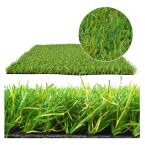

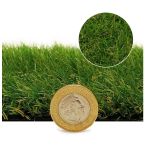


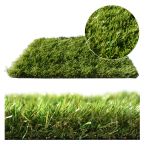


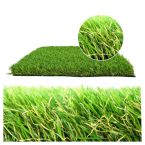
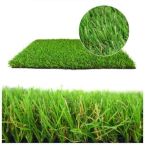

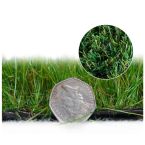







 >
>